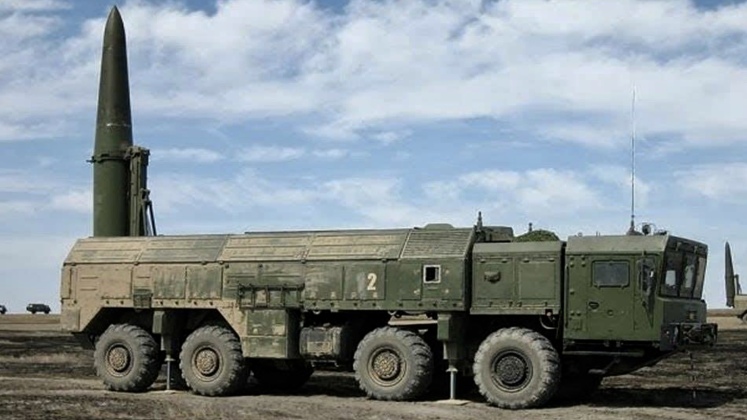Russia’s Iskander-1000 Missile
The Iskander-1000 missile, developed by Russia, represents advancement in tactical ballistic missile technology. Following the dissolution of the Intermediate Range Nuclear Forces (INF) Treaty, Russia has accelerated its missile production capabilities. The Iskander-1000 is designed to extend strike capabilities into Western Ukraine, enhancing Russia’s military effectiveness in the region.
Background of the Iskander Missile System
The Iskander missile system, also known as 9K720, has been a very important part of Russia’s tactical arsenal. Initially limited to a range of 500 kilometres due to the INF Treaty, the system’s capabilities were constrained. The treaty, established in 1987, aimed to eliminate intermediate-range missiles. However, the U.S. withdrawal in 2019 allowed Russia to explore new developments without legal restrictions.
Development of the Iskander-1000
- The Iskander-1000 is reported to have a range of 1,000 kilometres, effectively doubling its predecessor’s reach.
- This missile is being developed by the Machine-Building Design Bureau and aims to target NATO assets in Ukraine. The design features a larger propellant casing and a shorter warhead, indicating a shift in missile specifications to enhance range while maintaining destructive capability.
Technical Specifications and Features
The Iskander-1000 is believed to incorporate advanced technology to improve accuracy. It may utilise jam-resistant satellite navigation and terminal guidance systems to counteract potential adversary jamming. The missile’s warhead is expected to weigh between 710-800 kg, similar to the Iskander-M, ensuring effectiveness against high-value targets.
Strategic Implications of the Iskander-1000
The introduction of the Iskander-1000 allows Russia to strike deeper into Ukrainian territory. Critical targets such as command centres and supply depots previously out of reach are now within range. This development could alter the balance of power in the region, posing challenge to Ukrainian and NATO forces.
Deployment of Supporting Systems
In addition to the Iskander-1000, Russia plans to deploy the Oreshnik missile system in Belarus. This medium-range hypersonic missile enhances Russia’s military posture in Eastern Europe, further complicating the security landscape. The Oreshnik’s capabilities may serve as leverage in negotiations regarding Western military support for Ukraine.
Response from Ukraine and NATO
Ukraine has dismissed reports regarding the Iskander-1000 as disinformation. Ukrainian officials argue that such claims are part of a broader Russian propaganda strategy. However, concerns remain among NATO allies about the implications of the Iskander-1000 for regional security.
Month: Current Affairs - February, 2025
Category: Defence Current Affairs







